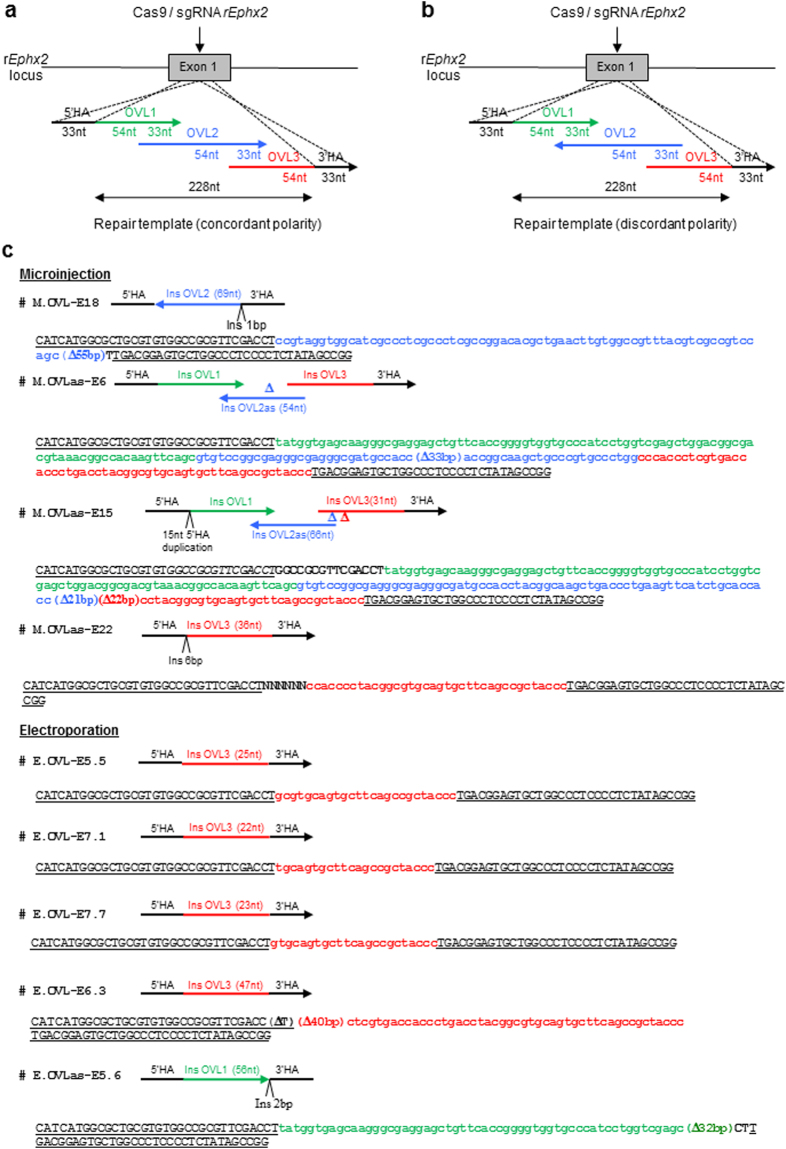Figure 4.
CRISPR/Cas9 mediated HDR strategies using OVL ssODN templates. (a) Schematic illustration of the rat Ephx2 locus with the site of CRISPRs/Cas9 cleavage (arrow) and the 3 overlapping ssODN (OVL1-OVL2-OVL3) of concordant polarity used as DNA repair template. The 3 overlapping ssODN are designed to generate a 228 nt insert at the rEphx2 locus. Each ssODN had a 120 nt length. The two external ssODN (OVL1 and OVL3) had a 33 nt overlap with the internal ssODN (OVL2) and a 33 nt HA corresponding to the left or the right side of the DSB. (b) Schematic illustration of the rat Ephx2 locus with the site of CRISPRs/Cas9 action (arrow) and the 3 overlapping ssODN (OVL1-OVL2-OVL3) of discordant polarity used as DNA repair template. The 3 overlapping ssODN are designed to generate a 228 nt insert at the rEphx2 locus. Each ssODN had a 120 nt length. The two external ssODN (OVL1 and OVL3) had a 33 nt overlap with the internal ssODN (OVL2) and a 33 nt HA corresponding to the left or the right side of the DSB. (c) Sequencing of the subcloned PCR products from embryos for which partial OVL ssODN insertion have been observed. 5′HA and 3′HA are underlined. Deletions are indicated in bold by “Δ”, insertions by “Ins” and in bold uppercase. OVL1, 2 or 3 insertions are indicated respectively in green, blue and red.

